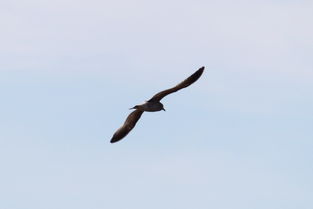Content:
Fishing for bream at dams can be an incredibly rewarding experience, offering anglers the chance to catch these popular and feisty fish in their natural habitat. Bream, also known as bluegill or sunfish, are known for their fighting spirit and tasty flesh. Whether you're a seasoned angler or a beginner looking to try your hand at dam fishing, here are some essential techniques to help you master the art of catching bream at dams.

Understanding Bream Behavior
Before diving into the fishing techniques, it's crucial to understand the behavior of bream. These fish are often found in shallow waters near structure, such as rocks, logs, and weed beds. They are most active during early morning and late evening, but can be caught throughout the day during warmer months. Bream are opportunistic feeders, so they're attracted to a variety of baits and lures.
Choosing the Right Equipment
The equipment you use can significantly impact your success when fishing for bream at dams. Here's what you'll need:
Rod and Reel: A light to medium-action rod and reel combination is ideal for bream fishing. The rod should be around 6 to 7 feet long to provide enough sensitivity and casting distance.
Line: Use a monofilament line with a breaking strength of 4 to 6 pounds. This line is strong enough to handle bream but light enough to allow for more delicate presentations.
Hooks: Small hooks, typically size 6 to 10, are best for bream. These hooks are less likely to harm the fish and are perfect for a variety of baits.
Lures and Baits: Soft plastics, spinners, and live bait like worms, crickets, and minnows are all effective for catching bream. Match your lure or bait to the forage in the dam.
Mastering the Art of Casting
Casting is a fundamental skill for any angler, and it's essential for reaching the bream in the dam. Here are some casting tips:
Practice Your Cast: Spend some time practicing your casting technique to ensure accuracy and distance control.
Cast to Structure: Target areas around rocks, logs, and weed beds where bream are likely to be hiding.
Cast Beyond the Target: Cast slightly beyond the structure to allow your lure or bait to work its way into the strike zone.
Effective Baits and Lures
Bream are attracted to a variety of baits and lures. Here are some effective options:
Soft Plastics: Small worms, grubs, and stick baits can be rigged on a hook and worked through the water to mimic forage.
Spinners: Small spinners with bright colors can be effective for attracting bream, especially in clear water.
Live Bait: Live bait like worms, crickets, and minnows can be irresistible to bream. They should be fished on a hook with a small split shot to keep them on the bottom.
Timing and Patience
Timing is everything when fishing for bream. Here are some tips to increase your chances of success:
Early Morning and Evening: These are the best times to fish for bream, as they are most active during these periods.
Patience is Key: Bream can be picky eaters, so be patient and allow your bait or lure to sit still for a few moments before moving it.
Adjust Your Technique: If you're not getting bites, try changing your lure, bait, or retrieve technique to see what the fish are responding to.
Catch and Release
When fishing for bream, it's important to practice catch and release to ensure the sustainability of the fishery. Here are some tips for safely releasing bream:
Use a Net: A net can help you handle the fish gently and reduce stress.
Support the Fish: Hold the fish horizontally in the water to keep it from struggling.
Release Quickly: Get the fish back in the water as quickly as possible to reduce stress.
Conclusion
Fishing for bream at dams can be a delightful and challenging pursuit. By understanding the behavior of bream, choosing the right equipment, mastering casting techniques, and using effective baits and lures, you'll be well on your way to becoming a successful bream angler. Remember to practice catch and release to ensure the future of bream fishing. Happy fishing!












